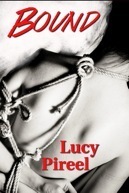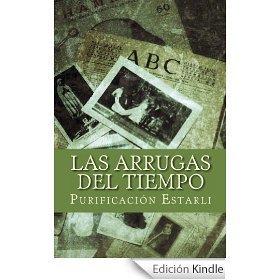Olga Núñez Miret's Blog: Author Translator Olga, page 121
June 10, 2013
Historias de Familia. Conrado Miret Musté. Oficialmente murió por Francia.
He publicado ya varias veces sobre los dos tÃos de mi madre, Josep y Conrado Miret Musté, que dejaron Barcelona durante la Guerra Civil y fueron a Francia. Si los habéis leÃdo (y si no, siempre estáis a tiempo) recordaréis que uno de mis primos, Juan Molet, has estado documentándose sobre sus vidas (y muertes) pero hasta ahora no habÃa conseguido encontrar nada que confirmase la muerte de Conrado.
Juan participó en un homenaje organizado en Prayol, el pasado fin de semana, en honor de los españoles que lucharon con la Resistencia Francesa. Aquà se reveló que finalmente habÃan encontrado un documento confirmando que Conrado habÃa muerto el 27 de Febrero de 1942. Adjunto el documento que da muy pocos detalles, aparte de la firma de un testigo, uno de los guardas del la prisión (Rue de la Santé 42). Parece que murió a mano de los torturadores.
![Conrado - ce que porté sur registre maintenant[1]](https://i.gr-assets.com/images/S/compressed.photo.goodreads.com/hostedimages/1381119538i/4268180._SX540_.jpg)
Ahora, con este documento, finalmente le han dado el status de haber muerto luchando por Francia.
También adjunto una copia de la foto que los oficiales usaron para su búsqueda y captura. Se me ha grabado en el cerebro pero quizás sea la cosa de familia más que la foto en si.
Portrait à tirer MIRET
Y una foto de mi primo delante de la foto durante el homenaje.
Mi primo comenta que pudo hablar con Ãngel Ãlvarez, miembro del Exercit Popular de la Republica, y luego de la Resistencia Francesa, y el primer español que consiguió escapar del tren que el llevaba a Dachau. Mi primo explicaba que la suya es una historia muy triste pero a la vez inspiradora.
Espero poder ver a mi primo cuando visite Barcelona en Septiembre y confÃo en que podré traer de vuelta mucho más de lo que hablar.
Gracias por leer y por favor, compartid. Y si tenéis algunas historias relacionadas con el tema o más información, no dudéis en comentármelo.


June 6, 2013
Autor invitado: Josep Capsir (Capi)
Hoy os traigo como invitado a otro autor del grupo de escritores hispanos del que os vengo hablando. Josep Capsir es de Barcelona (sí, otro, ya os digo que escribiendo nos quedamos solos) y ha accedido muy amablemente a hablarnos un poco de su Carrera, sus dos obras publicadas hasta ahora, las dos extremadamente populares: La herencia de Jerusalén (una novela histórica) y REC (Relatos para ensanchar las costillas, relatos cómicos). Y para que podáis seguir sus escritos habituales, el enlace a su blog, que es genial.
Josep Capsir (Capi)
Biografía del autor
JOSEP CAPSIR COMIN, conocido entre su entorno con el sobrenombre de “CAPI“, nació en Barcelona en 1.970. Inicia su singladura literaria en el año 2009, participando en diferentes certámenes literarios. Gana el certamen “Mi primera vez” de La Vanguardia en el 2010 y es finalista en otros cinco certámenes de relato corto. A finales de año, escribe junto a otros tres autores el libro de terror “El vórtice macabro“. Ese mismo año, crea el blog “Mi ventana al exterior” donde empieza a torturar a sus fieles seguidores con sus relatos de humor, a los que etiqueta como “Relatos para ensanchar costillas“. Paralelamente a la gestión del blog, escribe su primera novela, “La herencia de Jerusalén“, un thriller histórico y religioso. Animado por el éxito y la repercusión que los relatos de humor han provocado en la red, a principios del 2012, decide editar un recopilatorio en Amazon, en digital y en formato papel. Ese mismo año, publica también en Amazon y en exclusiva la novela “La herencia de Jerusalén”, situándose en pocas semanas entre los más vendidos. Actualmente, y tras ocho meses consecutivos, se mantiene entre las diez más vendidas en España, habiendo fidelizado a más de 6000 lectores.
La Herencia de Jerusalén
Hugo Di Bella, un estudiante de historia, posee un antiguo ejemplar de un libro hebreo en su biblioteca familiar. Este libro, redactado en el periodo de los incunables, fue rescatado antes de ser destruido por el sumo poder pontífice. Una llamada de su profesor, Daniel Malluck, Doctorado en historia antigua, origina que éste conozca la existencia del incunable. Movido por el interés histórico de un ejemplar único y la curiosidad, Malluck se reunirá con su alumno e invitará a un buen amigo, el filólogo Lucio Servade para poder traducir del hebreo los misterios que esconde el misterioso libro.
Poco a poco, encontrarán las claves que cifran el contenido del libro e irán descubriendo las localizaciones de los tesoros del Templo de Salomón y los cambios de ubicación que han ido teniendo durante los últimos siglos. Descubrirán donde se esconde el Arca de la Alianza, la Vera Cruz y el Evangelio apócrifo de Jesús de Nazaret.
Ellos tres, deberán descodificar los textos cifrados que contiene el “Traspaso de los compromisos de resguardo de la Morada de los Testimonios y de los Sacros enseres.”
Tras desentrañar los jeroglíficos que esconde el libro, emprenderán una fascinante y peligrosa búsqueda de algunos de los tesoros ocultos.
Pero la congregación más antigua y secreta del mundo sigue velando para que algunas cosas no salgan nunca a la luz.
Porque la verdad es peligrosa…
Aquí podéis visualizar el booktrailer: http://www.youtube.com/watch?v=2YGyZvgwnoc
Clasificación actual en Amazon (por si os interesan esas cosas):
n°36 Pagados in Tienda Kindle (Ver el Top 100 de pago en Tienda Kindle)
n°10 en Tienda Kindle > eBooks Kindle > Ficción histórica
n°10 en Libros > Ficción histórica
n°11 en Libros > Policíaca, negra y suspense
http://www.amazon.es/dp/B0080Y3TD8/
REC – Relatos para Ensanchar Costillas
Un golfo sin suerte, una tonta, un descreído, un cornudo, una pareja con problemas o un cura con una extraña descendencia son algunos de los muchos personajes que podrás encontrar en este recopilatorio de “Relatos para ensanchar costillas”, algo más que un libro de humor. REC es un nuevo concepto de lectura recreativa donde el lector decide la cantidad de páginas que lee al día.
Puedes leer las historias de REC en el autobús, en la sala de espera del dentista e incluso en el cuarto de baño.
¿Sabías que la risa mejora nuestro estado de ánimo y nuestra salud física y mental? ¿Sabías que reír una vez al día tiene poderosas propiedades terapéuticas? No sólo relaja nuestro cuerpo, además refuerza el sistema inmunológico, estimula la liberación de endorfinas y protege nuestro corazón.
Léete un relato cada noche antes de acostarte, o antes de comer, o a la hora del café. Puedes leer también un relato mientras vacías vientre y entrañas. La risa también tiene propiedades de relajación del esfínter.
* Este anuncio NO es de un medicamento.
* No es necesario que leas detenidamente las instrucciones de uso.
* En caso de duda NO consultes a tu farmacéutico.
* Nota importante: Si tomas laxantes regularmente, NO LEAS ESTE LIBRO.
Y a reír que son dos días…
Visiona el book trailer del libro, donde se incluye el cómic.
http://www.youtube.com/watch?v=VKzbeY19Ocs
http://www.amazon.es/dp/B007JOBRWK/
En papel:
http://www.amazon.es/R-E-C-Josep-Capsir-Capi/dp/8415346964/
Por si os gustan los números:
n°11 en Tienda Kindle > eBooks Kindle > Literatura y ficción > Cuentos
n°12 en Libros > Literatura y ficción > Cuentos
n°17 en Tienda Kindle > eBooks Kindle > Humor
Gracias a Josep por ser mi invitado y a vosotros gracias por leer. Si queréis seguir leyendo, aquí está el enlace a su blog. Y si os ha gustado no os olvidéis de compartir, y de hacer CLICK!
Enlace a su blog:
http://josepcapsir.blogspot.co.uk/2013/05/


‘First I Love You’ and ‘Second of All’ Blog Tour by author Genevieve Dewey
Today I’m honoured to host the blog tour for Genevieve Dewey’s new book part of her Downey Trilogy: ‘First, I Love You’.
Here is Genevieve to tell us a bit about herself:
Genevieve Dewey is the author of The Downey Trilogy (First, I Love You & Second of All) and the short stories Bird Day Battalion & V-Day Aversion. She is a wife, mother, sister, friend and Anthropologist. She was raised mostly in Nebraska, partly in Arizona. She has a Master’s in Anthropology and worked as an Applied Anthropologist for years (even ran her own research company for a while) before deciding to be a stay at home mom. She loves passionate (rational) debates, reading, and libraries… oh, and Chicago and high-heels and chocolate and target practice and gangster flicks and anything with the FBI in it and run-on sentences. She lives in Nebraska with her three brilliantly diabolical children and one incredibly funny husband.
You can find Gen online at:
Twitter: http://www.twitter.com/GenevieveDewey
Facebook: http://www.facebook.com/GenevieveDewey
Goodreads: http://www.goodreads.com/author/show/6441991.Genevieve_Dewey
Amazon: http://www.amazon.com/Genevieve-Dewey/e/B00936QL2S/
Pinterest: http://pinterest.com/genevievedewey/
And now, of course, the novels:
Book Description: First, I Love You
If Mario Puzo and Jane Austen crossed the time-space continuum and mated, “First, I Love You” would be their literary baby. Imagine being a detective with a mobster for a father, or a mobster with a straight arrow, good cop for a son. This is a relationship that is tricky on its best day. Add in some well-meaning meddling from a mob princess sister, an arrogant DEA agent, and gangsters running a human trafficking ring and you have a recipe for a book that refuses to follow the rules. Told from the perspective and point of view of each the six main characters this is the first novel in a trilogy about love, loyalty, revenge and redemption.
Omaha Detective Tommy Gates has kept his gangster father at arm’s length his whole life. Mickey Downey has spent the better part of the last two decades trying to find ways to get back the son he lost through Witness Protection. Now Tommy has taken an opportunity to work on a Federal Human Trafficking Joint Task Force in Chicago where his father lives. Tommy’s sister Kiki and his mother Mary see this as an opportunity to build a relationship between the two. Tommy’s new DEA partner James Hoffman sees it as an opportunity to gain leverage over Mickey Downey. Tommy’s other partner, FBI Agent Ginny Sommers wants to keep Tommy’s family as far from the case as possible. When Kiki and James join forces, sparks fly and it sets fire to a maelstrom of unexpected consequences for everyone involved.
One part The Godfather, two parts Emma and a dash of Casablanca mixed together, “First, I Love You” isn’t a detective novel, a gangster novel, a mystery, a romance or a family saga. It’s a little of all of the above.
Title: First, I Love You
Author: Genevieve Dewey
Genre: Contemporary Drama with romance subplot
Event organized by: Literati Literature Lovers
Purchase Link: Amazon/ Smashwords
Book Description: Second of All
“…for there is nothing so perfect as a thing with no ending and no beginning such as a family of souls intertwined…”
This introspective sequel to First, I Love You takes you deeper into a tale of interwoven roles, divided loyalties, and personal conflicts.
Detective Tommy Gates and Agent Ginny Sommers struggle to balance their growing personal relationship with their task of finding his father. Back home, Kiki Downey and James Hoffman are facing their own internal and external pressures. After Mary Gates is led on a different trail by Mickey’s Irish kin, they are all given pieces of a puzzle that it will take the whole family to solve. Interlocked within the narrative are glimpses into how Mickey Downey became the man he is today.
Throughout their journeys, past and present, they all must struggle with what loyalties and loves come first, and what comes… second of all.
Title: Second of All
Author: Genevieve Dewey
Genre: Contemporary Drama with Romance Subplot
Event organized by: Literati Literature Lovers
Purchase Link: Amazon/ Smashword
And especially for you all tour followers, there is aTour-Wide Giveaway: (10) set digital copy of First, I Love You
and Second of All
Here I leave you the tour schedule:
Tour Schedule
June 3, 2013
Cruising Susan’s Book Review’s
Penelope Jones a little bit of nice and a whole lot of naughty
June 4, 2013
June 5, 2013
June 6, 2013
June 7, 2013
Thank you for reading and if you’re enjoyed the post, remember to share, take part in the rafflecopter giveaway and CLICK!
Related articles
First I Love You by Genevieve Dewey @GenevieveDewey #spotlight @Literati_Lit (readingrenee.com)
Review of First, I Love You by Genevieve Dewey (literatiliteraturelovers.com)
Second of All Cover Re-reveal by Genevieve Dewey (literatiliteraturelovers.com)
Cover Reveal & Excerpt For Second of All By Genevieve Dewey (cruisingsusanreviews.com)
Review of First, I Love You by Genevieve Dewey (romancemistress.wordpress.com)
First, I Love you Cover Reveal by Genevieve Dewey (literatiliteraturelovers.com)


June 3, 2013
What value art?
Everything has a price tag. Yes, I know that things that are really worth millions can’t be bought, like good health, happiness, or time, although some things that help maximise them can (good medical care, time management devices, lack of financial concerns, task delegation). But in general terms, most things have a price attached. Value is not the same as price. You might value a nice sunny day and time spent with friends and that has not price tag attached. And other people might be prepared to pay a high price for things that you would not give a cent/penny for, and might not even want them for free (latest fashion design, a gadget that you’re not interested in, a sports ticket you don’t care for).
What is the value of art? Do you think artists ‘work’? Should they be paid for their efforts?
If you’re wondering where I’m going with this, it’s something that I’ve been thinking about a fair bit recently. A couple of friends of mine, a man and a woman, both extremely talented, both write, both also make movies, one is also an actor, the other one directs movies and works on scripts for people (and both have made videos for me) narrated very similar anecdotes to me last weekend. On Saturday I was exchanging messages with Alan Cooke (a.k.a. Wild Irish Poet) who told me he’d been asked to take part in a project run by somebody else on the expectation that his time and effort would be given for free (and the unspoken understanding that he should be grateful to be asked). The next day Magda Olchawska told me a couple of young women working in a project had told her they thought she’d be the right person to help them, again with the expectation that this would be provided free of charge. Both of them had a similar take on the matter. ‘You would not ask a plumber to do a repair for free, would you?’ Or ‘You wouldn’t go to a shop and take what you needed without paying; why should expectations be different?’ Why indeed.
We (or the majority of people, but sorry for unfair generalising) seem to think that whilst professions (or people doing a more ‘mundane’ job) do it for the money and it therefore has a value and a price attached, in the case of artists it’s not the same. They’re having fun! They’re doing what they really want to do! Do they need to get paid on top of that? Now you’re kidding me!
Well, surprise, surprise, artists eat too. They have to train and work hard at what they do. It takes many years to achieve expertise on a subject or field, qualifications, to keep updated, and of course you have use of materials, resources, time…Imagine musicians playing their instruments for years before they master them, or ballet dancers training since they are little and sacrificing games and playing time for their art. We all have heard stories of people who suddenly after writing their first book, or posting their song on the internet, or taking a picture or video, their work went ‘viral’ and became successful overnight. This happens, but compared to the number of people who try to make a living in any of these (and many other) art-related subjects, the likelihood is so small that it’s similar to winning a big lottery price. It is not the norm. Most artists work for many years to see little return and few manage to make a comfortable living out of it (let aside become ‘successful’ and ‘famous’). Struggling to make ends meet is the norm rather than the opposite. Very few get to be well known names like Damien Hirst, Lady Gaga, or Russell Crowe. But they still have to put a roof over their heads, food on the table and pay the bills.
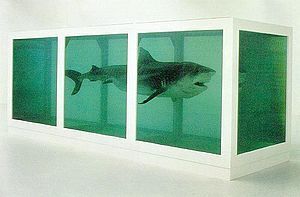
The Physical Impossibility of Death in the Mind of Someone Living by Damien Hirst (1991) (Photo credit: Wikipedia)
And when they can, artists love to help colleagues and do things for good causes, but not to the detriment of their livelihood. So next time you look (or listen, or touch, or…) a work of art, ask yourself what value does it have to you. Because if it makes you think, it transmits beauty, it makes you happy, it makes you want to dance…it’s worth something. Don’t take it for granted.
Thank you for reading. If it has made you think, please leave a comment, and share.
And in case you want some information about my friends I leave you a link to Alan’s page on Facebook:
And to a post on Magda:
http://olganm.wordpress.com/2013/05/17/guest-author-and-filmmaker-magda-olchawska/
Go on, click and share!
Related articles
What Picasso Knew: Branding Tips For Artists From An Art Basel Insider (forbes.com)
Great artists of the 20th century: their best quotes (telegraph.co.uk)


¿Cuánto vale el arte?
Todo tiene un precio. SÃ, ya sé que las cosas de más valor no se pueden comprar, como la buena salud, la felicidad, el tiempo libre, aunque algunas cosas que pueden ayudarnos a sacarles más partido (buen cuidado médico, tecnologÃa que nos ahorra tiempo, buena solvencia, delegar las tareas) sà que se pueden comprar, o alquilar. Pero en general, la mayorÃa de cosas llevan una etiqueta con el precio adosado. El valor de algo no es lo mismo que su precio. Tú puedes valorar muchÃsimo un bonito dÃa soleado y pasar un rato con tus amigos y eso no tiene precio. Y otras personas estarán dispuestas a pagar un alto precio por cosas por las que tú no darÃas ni un penique o un céntimo, e incluso no las querrÃas ni gratis (el último diseño de moda, él último juego de ordenador, una entrada para la final de un deporte que no te gusta).¿Cuál es el valor del arte? ¿Creéis que los artistas âtrabajanâ? ¿Se les deberÃa pagar por sus esfuerzos?
Si os estáis preguntando adónde quiero llegar con todo esto, es algo que me ha hecho pensar mucho recientemente. Un par de amigos mÃos, un hombre y una mujer, los dos con mucho talento, los dos escritores, los dos hacen pelÃculas, uno es también actor, la otra dirige pelÃculas y se dedica a adaptar guiones para otros (y los dos han hecho videos promocionales para mÃ) me contaron dos anécdotas muy parecidas el fin de semana pasado. El sábado estaba intercambiando mensajes con Alan Cooke (alias Wild Irish Poet, el poeta salvaje irlandés) que me dijo que le habÃan pedido que participara en un proyecto organizado por otra persona, convencidos de que darÃa su tiempo y esfuerzo gratis (y por supuesto tendrÃa que estar agradecido por la propuesta). Al dÃa siguiente, Magda Olchawsak me dijo que un par de mujeres jóvenes trabajando en un proyecto cinematográfico se pusieron en contacto con ella diciéndole que creÃan que ella era la persona más adecuada para ayudarlas, de nuevo con el convencimiento de que tal ayuda serÃa gratuita. Los dos compartÃan una opinión muy similar sobre ello. âNo le pedirÃas a un fontanero que te hiciera una reparación gratuita, ¿verdad?â O âNo irÃas a una tienda y te llevarÃas lo que necesitaras sin pagar, ¿por qué tendrÃa que ser diferente esto? SÃ, muy buena pregunta. ¿Por qué?
Nosotros (o la mayorÃa de la gente, pero perdón por generalizar injustamente) parecemos pensar que mientras los profesionales (o gente que se dedica a trabajos más âmundanosâ) lo hacen por dinero y por eso tiene un valor y un precio adherido, en el caso de los artistas no es lo mismo. ¡Ellos se lo pasan bien! ¡Hacen lo que siempre han querido hacer? ¡Y encima quieren que se les pague! ¡Deben estar de broma!
Pues, sorpresa, sorpresa, los artistas también comen. Tienen que practicar, experimentar y trabajar duro en lo que hacen. Se tardan muchos años en alcanzar experiencia y maestrÃa en un campo o especialidad, en algunos casos hay que obtener diplomas y estudios, hay que mantenerse al dÃa, y por supuesto se usan materiales, energÃa, tiempoâ¦Imaginad a los músicos que estudian y practican con sus instrumentos muchos años antes de alcanzar nivel profesional, o los bailarines de ballet que empiezan a bailar desde muy niños y sacrifican juegos y tiempo con sus amigos por su arte. Todos hemos oÃdo las tÃpicas historias de gente que de buenas a primeras después de escribir su primer libro, o descargar su canción en el internet, o publicar una fotografÃa o video, de repente se vuelve âviralâ todo el mundo lo comparte y de la noche a la mañana se hacen famosos y consiguen un gran éxito. Eso pasa, pero comparado con la cantidad de gente que intentan ganarse la vida con tales artes (y muchas otras), las probabilidades son tan minúsculas que es similar a ganar un premio gordo en la loterÃa. No es la norma. La mayorÃa de los artistas trabajan mucho años y obtienen muy poco dinero a cambio de sus esfuerzos y pocos llegan a vivir una vida confortable solo con las ganancias de su arte (por supuesto ya no hablamos de los contadÃsimos que llegan a ser âfamososâ y a tener âéxitoâ). Muy pocos llegan a ser nombres conocidos como Mariscal, Lady Gaga, o Javier Bardem. Pero famosos o no necesitan un techo sobre sus cabeza, comida en la mesa y dinero para pagar los recibos.
Y cuando pueden a los artistas les encanta ayudar a sus colegas y contribuir con su apoyo a causas que se lo merecen, pero no si eso significa que no se pueden ganar la vida.
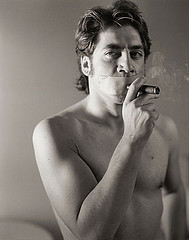
Javier Bardem (Photo credit: Kami Jo)
La próxima vez que mires (o escuches, o toques, oâ¦) una obra de arte, pregúntate qué valor tiene para ti. Porque si te hace pensar, si transmite belleza, si te hace feliz, si te da ganas de bailarâ¦tiene valor. No lo tomes a la ligera.
Gracias por leer. Si te ha hecho pensar, por favor, deja un comentario, y compártelo.


¿Cuánto vale el arte?
Todo tiene un precio. Sí, ya sé que las cosas de más valor no se pueden comprar, como la buena salud, la felicidad, el tiempo libre, aunque algunas cosas que pueden ayudarnos a sacarles más partido (buen cuidado médico, tecnología que nos ahorra tiempo, buena solvencia, delegar las tareas) sí que se pueden comprar, o alquilar. Pero en general, la mayoría de cosas llevan una etiqueta con el precio adosado. El valor de algo no es lo mismo que su precio. Tú puedes valorar muchísimo un bonito día soleado y pasar un rato con tus amigos y eso no tiene precio. Y otras personas estarán dispuestas a pagar un alto precio por cosas por las que tú no darías ni un penique o un céntimo, e incluso no las querrías ni gratis (el último diseño de moda, él último juego de ordenador, una entrada para la final de un deporte que no te gusta).¿Cuál es el valor del arte? ¿Creéis que los artistas ‘trabajan’? ¿Se les debería pagar por sus esfuerzos?
Si os estáis preguntando adónde quiero llegar con todo esto, es algo que me ha hecho pensar mucho recientemente. Un par de amigos míos, un hombre y una mujer, los dos con mucho talento, los dos escritores, los dos hacen películas, uno es también actor, la otra dirige películas y se dedica a adaptar guiones para otros (y los dos han hecho videos promocionales para mí) me contaron dos anécdotas muy parecidas el fin de semana pasado. El sábado estaba intercambiando mensajes con Alan Cooke (alias Wild Irish Poet, el poeta salvaje irlandés) que me dijo que le habían pedido que participara en un proyecto organizado por otra persona, convencidos de que daría su tiempo y esfuerzo gratis (y por supuesto tendría que estar agradecido por la propuesta). Al día siguiente, Magda Olchawsak me dijo que un par de mujeres jóvenes trabajando en un proyecto cinematográfico se pusieron en contacto con ella diciéndole que creían que ella era la persona más adecuada para ayudarlas, de nuevo con el convencimiento de que tal ayuda sería gratuita. Los dos compartían una opinión muy similar sobre ello. ‘No le pedirías a un fontanero que te hiciera una reparación gratuita, ¿verdad?’ O ‘No irías a una tienda y te llevarías lo que necesitaras sin pagar, ¿por qué tendría que ser diferente esto? Sí, muy buena pregunta. ¿Por qué?
Nosotros (o la mayoría de la gente, pero perdón por generalizar injustamente) parecemos pensar que mientras los profesionales (o gente que se dedica a trabajos más ‘mundanos’) lo hacen por dinero y por eso tiene un valor y un precio adherido, en el caso de los artistas no es lo mismo. ¡Ellos se lo pasan bien! ¡Hacen lo que siempre han querido hacer? ¡Y encima quieren que se les pague! ¡Deben estar de broma!
Pues, sorpresa, sorpresa, los artistas también comen. Tienen que practicar, experimentar y trabajar duro en lo que hacen. Se tardan muchos años en alcanzar experiencia y maestría en un campo o especialidad, en algunos casos hay que obtener diplomas y estudios, hay que mantenerse al día, y por supuesto se usan materiales, energía, tiempo…Imaginad a los músicos que estudian y practican con sus instrumentos muchos años antes de alcanzar nivel profesional, o los bailarines de ballet que empiezan a bailar desde muy niños y sacrifican juegos y tiempo con sus amigos por su arte. Todos hemos oído las típicas historias de gente que de buenas a primeras después de escribir su primer libro, o descargar su canción en el internet, o publicar una fotografía o video, de repente se vuelve ‘viral’ todo el mundo lo comparte y de la noche a la mañana se hacen famosos y consiguen un gran éxito. Eso pasa, pero comparado con la cantidad de gente que intentan ganarse la vida con tales artes (y muchas otras), las probabilidades son tan minúsculas que es similar a ganar un premio gordo en la lotería. No es la norma. La mayoría de los artistas trabajan mucho años y obtienen muy poco dinero a cambio de sus esfuerzos y pocos llegan a vivir una vida confortable solo con las ganancias de su arte (por supuesto ya no hablamos de los contadísimos que llegan a ser ‘famosos’ y a tener ‘éxito’). Muy pocos llegan a ser nombres conocidos como Mariscal, Lady Gaga, o Javier Bardem. Pero famosos o no necesitan un techo sobre sus cabeza, comida en la mesa y dinero para pagar los recibos.
Y cuando pueden a los artistas les encanta ayudar a sus colegas y contribuir con su apoyo a causas que se lo merecen, pero no si eso significa que no se pueden ganar la vida.

Javier Bardem (Photo credit: Kami Jo)
La próxima vez que mires (o escuches, o toques, o…) una obra de arte, pregúntate qué valor tiene para ti. Porque si te hace pensar, si transmite belleza, si te hace feliz, si te da ganas de bailar…tiene valor. No lo tomes a la ligera.
Gracias por leer. Si te ha hecho pensar, por favor, deja un comentario, y compártelo.


May 30, 2013
Guest author Lucy Pireel
Today I bring you an author I’ve met very recently. She’s also a member of ASMSG, a reader and reviewer, she creates book covers and she does a great job of promoting fellow authors. I advise you to click on the links at the end of the post and you’ll be able to follow not only her own work but also that of many other writers. And she’s kindly offered her new book ‘Bound’ free in Smashwords. Click on the link at the end of the post and use this code (code TC66T) to get your free copy.
She’s been very kind in talking a bit about herself, and then there’s a brief blurb of her book and the links to her sites.
Enjoy reading and getting to meet wonderful Lucy Pireel!
So, we need to talk about me? What is there to say? What can I say, too much, and probably not enough. Let’s start at the very beginning.
I was born in Brasil, and nowadays live in the UK, have a son who lives with his dad, not in the UK.
I love to bake, and cook, but not to eat that much. That is, when I’m not writing, or reading. But gardening is yet another thing I enjoy. The gardening started when my son said, “Mommy, do tomatoes grow in the store?” I just had to show him where veggies and fruit come from and of course taking him to a farmer wasn’t cutting it. Nooo, I had to start a veg patch, but how to grow those delicate tropical things like eggplants and such? Right, enter a greenhouse, before I knew it I was growing 15 different types of tomatoes, three types of eggplants, 8 varieties of bell peppers and whatnot in the greenhouse, while outside there were more things growing and being eaten by little creatures that love fresh produce too. Since I vowed to grow everything organic, there was no poison entering our garden and I ended up with loads of butterflies and no—or hardly any—crop, because caterpillars have a right to eat too. But that’s besides the point, my son now knows fruit and vegetables grow on plants, bushes or trees.
You’d think with working in the garden my daily exercise time is covered, but nope. Yoga, keeps me bendy and sweaty all the time, every time and the best thing? I get the greatest ideas when tied in a knot.
You want to know even more about me? I mean, really? I’m not that interesting, honestly, I’m not! I’ve studied Law, but never tried a case, don’t tell a soul, but I have a thing with speaking in public, or rather against it. Have you ever had a swimming pool under your arms? Vocal cords that don’t work? A brain shutting down and not knowing how to form a cohesive sentence or remember what and how and why. Why, did I ever agree to stand here and make an arse of myself? What am I supposed to say to these people? That kind of jitters make it impossible to stand in court and successfully try a case. So, I got time in prison, on the right side of the table, fraternising with the wrong side of society, to run back to the office and type up briefs and whatnot.
But then! A near wonder occurred, I became a mom! Yay! No more working long hours, no more being tough and relentless, instead I got in touch with my soft side and loved it. First you only sing as a mom. I never used gaga, lala, baby language, as soon as those little eyes began to look a tiny bit intelligent, it was reading real stories to the little critter. The moment he talked, he asked for more stories, other stories not those he’d heard already, and I began making them up myself. And my first stories were created, pirates and mayhem. Hey! It’s a boy, he wanted more than just a happy end, things needed to happen.
From there the jump to darker tales was not hard to imagine and then combining traditional fairy tales with murder and mayhem was even more fun, and the first twisted fairy tale was born/conceived. It was a flash of Red Ridinghood, but not with a happy end. That wasn’t enough for me. More needed to happen, to more of those heroines and I wrote and wrote and rewrote and edited and polished and then hired a professional editor to get the last commas on their proper place and tighten up the lot. When a professional artist offered to create me a cover for this collection, I could no longer refuse to get into publishing what I write. Resulting in my first self-published book Red Gone Bad, Fairy Tales or Not. Soon after the second followed and now Bound is out there. A BDSM novella starring an independent woman who loves to play games. Cover by my own hand.
These days I create my own covers and learned how to edit, but still use a second and third pair of eyes before being confident enough to publish my work. I blog and feature other authors, because I know how difficult it is to get your work noticed in the vast sea of books out there. I try to keep up my reading and reviewing, also because we indies need reviews and such.
And that’s me in a nutshell.
Bound
A young, successful woman finds herself attracted to a man who is known for his promiscuity. She has no idea if he wishes to play with her the way she wants him to.
While working together, they become closer. When she finally dares to reveal her desires, he only only asks her if she’s ready to say ‘please’. After she does, the games begin. But where will they end?
http://www.amazon.co.uk/Bound-ebook/dp/B00BAEGUHC/
http://www.amazon.com/Bound-ebook/dp/B00BAEGUHC/
https://www.smashwords.com/books/view/281858 (If you use (code TC66T) you can get a free copy!)
And now some links to her pages and her other books:
Facebook (all pages) : https://www.facebook.com/lucy.pireel?ref=tn_tnmn
https://www.facebook.com/AuthorpageLucyPireel
Blog
http://lucypireel.wordpress.com/
Goodreads page
http://www.goodreads.com/author/show/6536994.Lucy_Pireel
Amazon page
http://www.amazon.com/Lucy-Pireel/e/B009L692V2
Website
Smashwords page
https://www.smashwords.com/profile/view/LucyPireel
https://www.smashwords.com/profile/view/LucyPireel
AuthorsdB
http://www.authorsdb.com/component/content/article/8-authors/874-lucy-pireel
https://plus.google.com/u/0/105731497321102858244/posts?partnerid=gplp0
Buy links
Red Gone Bad
https://www.smashwords.com/books/view/260239
http://www.amazon.co.uk/Red-Gone-Bad-ebook/dp/B00AFVTYDS/
http://www.amazon.com/dp/B00AFVTYDS
Heaven’s Closed
https://www.smashwords.com/books/view/265588
Thank you for reading and don’t forget to CLICK!


Autora Invitada Puri Estarli
Conocí a Puri Estarli a través de un grupo de escritores hispanos en Facebook y como con el resto de los compañeros hemos compartido aventuras, experiencias, alegrías, desilusiones…En fin, casi una vida entera en unos meses.
Os traigo aquí una mini-biografía, detalles de sus novelas ‘Las arrugas del tiempo’, ‘El secreto de las margaritas’, ‘Miguelito y las gafas mágicas‘ y ‘Miguelito y la casa deshabitada’ y enlaces a sus páginas y su blog. Espero que disfrutéis leyendo sobre ella, y no os olvidéis de hacer CLICK!
Puri Estarli nació en Granada (España) en 1971. Tras licenciarse en Ciencias Biológicas en la Universidad de Granada, trabajó durante varios años en actividades relacionadas con su formación. Gran lectora, comenzó su andadura literaria escribiendo cuentos infantiles para sus hijos. En 2009 escribe su primera novela “El secreto de Las Margaritas“, que posteriormente, en febrero de 2012, autopublica en Amazon, llegando a situarse en el puesto número 8 en el top 100 de ventas en Amazon.es en marzo del mismo año. “El secreto de Las Margaritas” fue seleccionada para ser presentado en la XXXI Edición de la Feria del Libro de Granada. Ha conseguido mantenerse en el top 100 de ventas en amazon.es durante más de 10 meses y, hoy en día, continúa en las listas de los más vendidos. En 2011 escribe “Las arrugas del tiempo“, novela de ficción histórica que, ahora en 2012, ha sido igualmente autopublicada en Amazon. Es autora, asimismo, de la serie educativa infantil “Las Aventuras de Miguelito Cabeza Carbonilla“, cuyo objetivo es educar a los niños y niñas en valores. El primer cuento es “Miguelito y las gafas mágicas”, el segundo es “Miguelito y la casa deshabitada”, ambos publicados en también en Amazon. Es colaboradora habitual de diversos periódicos digitales. Actualmente, se halla inmersa en su tercera novela para adultos.
LAS ARRUGAS DEL TIEMPO
El 13 de septiembre de 1923 tiene lugar el golpe de estado al gobierno liberal de García Prieto por el capitán general de Cataluña, Miguel Primo de Rivera. Un día después nace Carmen Decano García, cuya vida estará marcada por la política hasta el día de su muerte.
Comenzando por una infancia sumida en la pobreza, la miseria y las desgracias derivadas de una guerra civil que duró más de la cuenta y cuyas consecuencias se sintieron en todos los ámbitos: social, político y económico, y terminando por una vida adulta marcada por los injustos preceptos de una época que evitarán por todos los medios su felicidad con el amor de su vida; pasando por los celos insanos de un hermano que hará del resto de su vida un infierno.
“Las arrugas del tiempo” es una novela de ficción histórica basada en hechos reales vividos por diferentes familias de la España en blanco y negro pero narrada a través de personajes completamente ficticios.
http://www.amazon.es/dp/B009G7C4N4/
EL SECRETO DE LAS MARGARITAS
La novela “El secreto de Las Margaritas” fue presentada en la XXXI Edición de la Feria del Libro de Granada, siendo uno de los ebooks más descargados en Amazon con cerca de 10 meses de permanencia en el ranking de los más vendidos.
Sinopsis:
Si alguien le hubiera dicho a Nuria Velo que su matrimonio iba resultar nulo, no se lo hubiera creído. Nada más casarse con el cirujano Álvaro Darsel e irse a vivir a Las Margaritas, un palacete a las afueras de Madrid, comenzó a deteriorarse su relación, hasta que descubrió el mayor de los secretos de su marido y por el que se anularía su matrimonio.
Nuria, abogada de profesión, encuentra el verdadero amor que llenará el vacío de su corazón cuando se tropieza en un bar del centro de Madrid con Ángel, el hombre de sus sueños.
“El secreto de Las Margaritas” es una novela de ficción contemporánea en la que se combinan las segundas oportunidades de ser feliz con los secretos y las mentiras. Una historia de fortaleza con un tema social polémico entre sus páginas.
http://www.amazon.es/dp/B0076A0D3Q/
“Miguelito Cabeza Carbonilla” es una serie de cuentos de aventuras para niñ@s entre los 7 y los 12 años que va más allá de la propia diversión y pretende educar en valores.
Valores tan importantes y enriquecedores como la amistad, la tolerancia, el respeto, la cooperación, la participación, la fidelidad, el compañerismo, …, aparecen escondidos entre las letras de “Miguelito Cabeza Carbonilla” para ser descubiertos por nuestros hijos de una forma divertida y amena. Sin apenas darse cuenta, aprenderán importantes cuestiones para ser mejores adultos.
El primer cuento de la serie, “Miguelito y las gafas mágicas”, nos habla de la amistad, el respeto y la honestidad, a través de una fabulosa aventura, llena de magia y fantasía, protagonizada por Miguelito y sus amigos.
El valor didáctico de estos cuentos es muy grande, merece la pena ser leídos por nuestros hijos.
http://www.amazon.es/dp/B007XJC2OI/
MIGUELITO Y LA CASA DESHABITADA
“Miguelito y la casa deshabitada” es el segundo cuento de la serie educativa “Las Aventuras de Miguelito Cabeza Carbonilla”. A través de la lectura de las aventuras de Miguelito, los más pequeños se divertirán aprendiendo valores importantes como el respeto, la solidadridad, la cooperación, la amistad,… Valores de gran significación para el desarrollo educativo y social de nuestros hijos. Son cuentos, por tanto, con un alto valor didáctico.
El primero de los cuentos de la serie “Las Aventuras de MIguelito Cabeza Carbonilla” se titula “Miguelito y las gafas mágicas”.
Sinopsis:
Es el último día de colegio y en la escuela se ha preparado una gran fiesta de fin de curso. Durante la misma, Miguelito y sus amigos planean la excursión a la casa deshabitada que hay cerca del Bosque Negro. Por el camino vivirán situaciones y aventuras dispares hasta llegar a la misteriosa casa en la que descubrirán un gran secreto.
http://www.amazon.es/dp/B00CBTQGHE/
Enlace a la página de Puri en Amazon:
http://www.amazon.com/-/e/B008M8CNPC
Y a su blog:
http://loslibrosdepuri.blogspot.com
Y no os olvidéis de hacer CLICK!


May 27, 2013
Matthew Bourne’s ‘The Sleeping Beauty. A Gothic Romance’
My rantings about book promotion made me decide that as I don’t really know what works (and I haven’t seen many scientific studies on the subject applicable to me) I’d rather do things that I like. One is writing. I also love reading, so I’ll carry on hosting guest authors (even classics that have stood the test of time), but I also love other things. I go to the cinema and to the theatre often, and I also enjoy other performances.
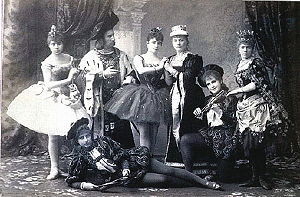
Publicity shot of the original cast of Tchaikovsky’s ballet, The Sleeping Beauty, St Petersburg: Mariinsky Theater, 1890. Carlotta Brianza starred as Aurora. (Photo credit: Wikipedia)
The 24th of May I went to see Matthew Bourne’s version of the Sleeping Beauty, Tchaikovsky’s well known ballet. Matthew Bourne, for those who don’t know him, is much more than a choreographer. His ballets are full blown creations, where everything (story, music, dancing, clothes, staging) is part of the story. If I could only say one thing about him I’d say he’s never boring. His ballets are not the formal, points and tutus kind of thing many people have in mind. Although he does versions of classics (together with completely new ballets, like ‘Dorian Gray’ or ‘Car Man’) and the quality of the dancing is as good, if not better, than anything you’ll see, it is never quite the story you remember.
I have been following his work for the last 9 or 10 years, although New Adventures, his company, is celebrating its 25th anniversary this year. I first heard him being interviewed in Radio 2 (BBC) when he was talking about ‘Highland Fling’ (and let me tell you, that’s a ‘wee [read little, Scottish expression] Scottish ballet’ with its first scene set in male urinals. It gets increasingly fanciful as it goes along, and I particularly loved the fairy with her tiny suitcase) that was touring. As it was going to be performed at the Lowry (if you have a chance and are visiting Manchester in the UK, don’t miss the Lowry museum and theatre and right next to it the Imperial War Museum North. Both incredible buildings always hosting great exhibitions) I had to go. And I’ve followed him since.

Matthew Bourne, choreographer for the stage adaptation of Edward Scissorhands, backstage in Melbourne 2006-11-28. (Photo credit: Wikipedia)
But enough preamble. To ‘Sleeping Beauty’. Matthew (not sure I should take such familiarities with him, but I’ve seen him at a Q&A session, so…I’ll consider him a friend) had to change it a tiny bit. In the programme of yesterday’s performance he explains that one of the problem with the story is that the prince just turns up at the end and rescues Aurora and there’s no real love story. So he decided that Aurora and Leo (he’s not a prince, he’s a gardener/keeper in the Castle) should meet and be in love before she falls asleep. One of my personal problems with the story is that Aurora spends most of the story asleep and indeed she’s an object of desire. Although that still happens, the Aurora in his version seems to be part of some sort of deal with the bad fairy, and she’s a bit of a special child. The wonderful puppet that substitutes the baby Aurora is quite wild, climbing up curtains and never doing what is expected. The young Aurora is also fairly wild and loves to take her shoes off and dance barefoot in the woods.
What else changes? Yes, some of the fairies are male (no surprises there, if you’ve seen the Nutcracker you know fairies come in all sizes, shapes and genders) and…if you love vampires…you’ll like this ballet. We have another baddy, we have mobile phones and modern day clothes, wonderful costumes, beautiful dancing…
To me Matthew Bourne’s ballets are very cinematic and a full spectacle. He tells wonderful stories and the ballet is a medium rather than the end.
Any buts? I would probably have preferred live music. And despite how much I love the puppetry, sometimes the technical aspects of it make the changes of set a bit clanky.
But if you have any opportunity to watch this or any other of his ballets, don’t miss it. If you like ballets, because they’re wonderful. If you don’t, because they are refreshingly different. They’re magical.
Thanks for reading!
Related articles
Theatre: Review: Matthew Bourne’s Sleeping Beauty, Newcastle Theatre Royal (journallive.co.uk)
Matthew Bourne’s gothic romance ballet (lamodelemonde.co.uk)
This week’s new dance (guardian.co.uk)


La bella durmiente de Matthew Bourne. Un romance gótico.
Mis protestas sobre promociones de libros me hicieron tomar la decisión de que ya que no sé qué funciona (y no he encontrado muchos estudios usando metodologÃa ciéntifica sobre el tema y menos aún que me sean aplicables) más vale que haga cosas que me gustan. Una de ellas es escribir. También me encanta leer y seguiré teniendo autores invitados (incluso clásicos que han sobrevivido el paso del tiempo), pero también me gustan otras cosas. A menudo voy al cine y al teatro y a veces voy a ver otras cosas.

Publicity shot of the original cast of Tchaikovsky’s ballet, The Sleeping Beauty, St Petersburg: Mariinsky Theater, 1890. Carlotta Brianza starred as Aurora. (Photo credit: Wikipedia)
El 24 de Mayo, fui a ver la Bella Durmiente, el famoso ballet con música de Tchaikovsky. Matthew Bourne, para los que no le conozcáis, es mucho más que un coreógrafo. Sus ballets son creaciones en todos los sentidos, donde todo (la historia, la música, la danza, el vestuario, el escenario) es parte de la historia. Si sólo pudiera decir una cosa sobre él dirÃa que aburrido desde luego no lo es. Sus ballets no son los tÃpicos formales con tutus y puntas que la mayorÃa de la gente imagina cuando les mencionan un ballet. Aunque hace versiones de clásicos (aunque también ballets completamente nuevos como âDorian Grayâ o âCar Manâ) y la calidad de la danza es tan buena, si no mejor, que nada que hayáis visto, nunca es exactamente la historia que recuerdas.

Matthew Bourne, choreographer for the stage adaptation of Edward Scissorhands, backstage in Melbourne 2006-11-28. (Photo credit: Wikipedia)
Yo llevo siguiendo su trabajo hace 9 ó 10 años, aunque su compañÃa, New Adventures (Nuevas Aventuras), celebra el 25 aniversario este año. Mi primer contacto con él fue cuando le oà entrevistado en Radio 2 (BBC) hablando de su ballet âHighland Flingâ (y dejadme que os diga que lo que él define como âun pequeño ballet escocésâ empieza con una escena en unos urinarios. La fantasÃa de la historia aumenta a medida que avanza, y a mà me encantó el hada con su maletita) que estaba de tour por el Reino Unido. Como estaba programado en el teatro del centro Lowry (si tienen oportunidad de visitar Manchester no se pierdan The Lowry y su vecino The Imperial War Museum North. Los dos son unos edificios modernos increÃbles y siempre tienen exhibiciones interesantes) tuve que ir. Y le he seguido desde entonces.
Pero ya basta de preámbulos. Hablemos de âLa Bella Durmienteâ. Matthew (no estoy segura de que deba tutearle, pero como lo he visto en vivo en una ronda de preguntas le considero un amigo. Espero que sea mutuo) tuvo que cambiar la historia un poquito. En el programa explica que uno de los problemas con la historia es que el prÃncipe llega al final, rescata a Aurora y pin pan, ya está. No hay historia de amor ni romance. Asà que decidió que Aurora y Leo (él no es un prÃncipe, es un jardinero del castillo) se conocen y se enamoran antes de que ella se duerma. Uno de los problemas que yo tengo con la historia es que Aurora se pasa la mayor parte del cuento dormida y es un objeto de deseo (y desvalida que necesita protección y rescate masculino). Aunque eso pasa, la Aurora de esta versión parece ser el resultado de algún arreglo entre los padres de Aurora y el hada mala, y es una criatura un pelÃn especial. La maravillosa marioneta que sustituye a Aurora de bebé es muy salvaje, trepando por las cortinas, y sin hacer jamás lo que se espera de ella. La joven Aurora también es un espÃritu libre y nada le gusta más que quitarse los zapatos y bailar descalza por el bosque.
¿Qué otras cosas cambian? SÃ, algunas de las hadas son hombre (no es una gran sorpresa, si habéis visto su Cascanueces ya sabéis que hay hadas de todas tallas, formas y sexos) yâ¦si os gustan los vampirosâ¦os gustará este ballet. Hay otro malo, teléfonos móviles y ropa moderna (incluso sudaderas), vestuario magnÃfico, danza bellÃsima y expresivaâ¦
A mà los ballets de Matthew Bourne me parecen muy cinematográficos y son un espectáculo completo. Cuenta unas historias maravillosas y el ballet es un medio de expresión más que un fin en sà mismo.
¿Algún pero? Probablemente preferirÃa música en directo. Y a pesar de lo que me encantó la marioneta, a veces los aspectos técnicos de tener que cambiar el muñeco hacÃan rechinar un poco los engranajes de la producción.
Si tenéis oportunidad de ver éste o cualquier otro de sus ballets, no la dejéis pasar. Si os gusta el ballet porque son fabulosos. Si no os gusta, porque son refrescantemente diferentes y mágicos.
Gracias por leer!


Author Translator Olga
En este blog hablo de la escritura y de mis libros, pero también reseño los libros de otros autores, comparto trucos, consejos, novedades literarias e ideas varias. Mi blog es bilingüe y comparto posts en español e inglés ...more
- Olga Núñez Miret's profile
- 250 followers


![SAM_3118[1]](https://i.gr-assets.com/images/S/compressed.photo.goodreads.com/hostedimages/1381119538i/4268181._SX540_.jpg)
![Josep%20Capsir[1]](https://i.gr-assets.com/images/S/compressed.photo.goodreads.com/hostedimages/1381119538i/4268186.jpg)
![La%20herencia%20de%20Jerusalén[1]](https://i.gr-assets.com/images/S/compressed.photo.goodreads.com/hostedimages/1381119538i/4268187.jpg)
![REC[1]](https://i.gr-assets.com/images/S/compressed.photo.goodreads.com/hostedimages/1381119538i/4268188.jpg)



![second-of-all[1]](https://i.gr-assets.com/images/S/compressed.photo.goodreads.com/hostedimages/1380988565i/3699256.jpg)

